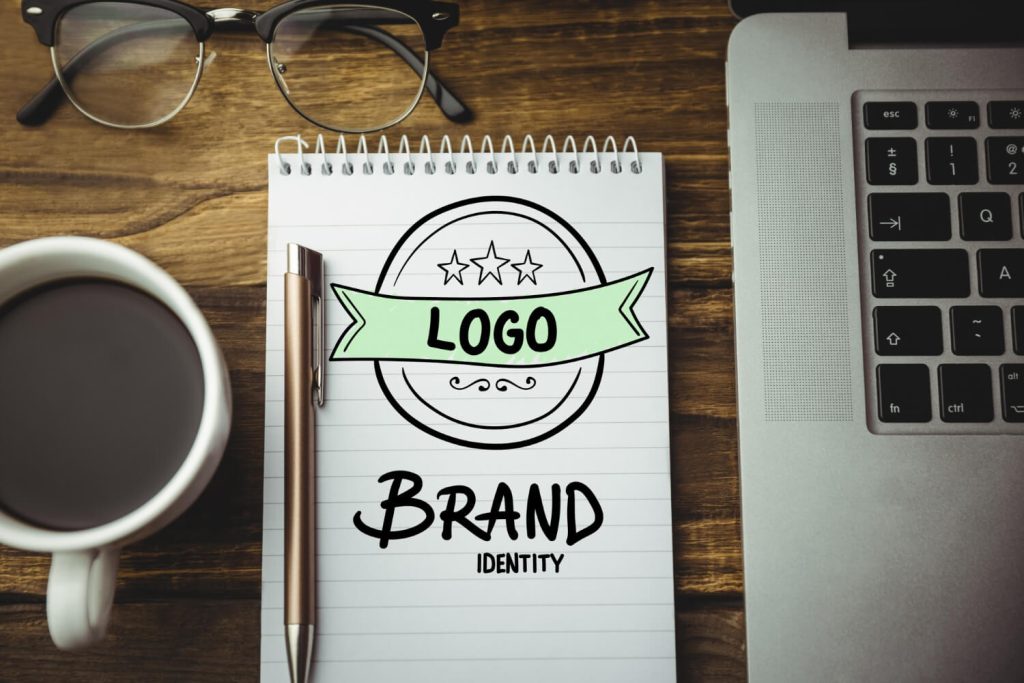Decoding the Terms: Branding And Brand Identity Explained

In the dynamic landscape of business, establishing a distinguished brand goes far beyond just a logo; it’s about crafting a compelling branding and brand identity as an image that resonates with your target audience. A successful brand hinges on a well-defined brand strategy that goes beyond mere visuals, encompassing the essence of your product or service. This journey to create a brand that stands out and resonates involves a deep understanding of the interplay between logo design, visual identity, and the intricate art of differentiation.
In this exploration, we’ll delve into the nuances of brand vs. logo, unravel the significance of visual identity and style guide, and understand how a strategic approach can build a brand that captivates and leaves an indelible mark.
What is brand identity?
Brand identity is the visual, emotional, and psychological representation of a company to its audience. It encompasses a range of elements, including the company’s logo, color palette, typography, design assets, and even the tone of communication. Brand identity goes beyond mere aesthetics; it’s about creating a consistent and unique identity that resonates with customers, evokes emotions, and builds brand recognition.
What is Meant by “Brand”?
A brand is much more than a logo or a name. It’s the perception that customers hold about a company, its products, and its values. It’s the sum total of experiences, emotions, and interactions associated with a business. A strong brand can differentiate a business from its competitors and foster customer loyalty.

Why is Branding Important for a Business?
Branding is the strategic process of shaping and influencing a brand’s perception in the market. It goes beyond just visual elements and touches every aspect of the business, from messaging to customer service. Effective branding creates a unique identity that sets a business apart, builds credibility, fosters customer trust, and ultimately drives customer loyalty and business growth.
What is the Difference Between Brand Vs Branding?
The terms “brand” and “branding” are often used interchangeably, but they have distinct meanings. A brand refers to the emotional and psychological associations that customers have with a business. On the other hand, branding is the active process of shaping and managing those associations through various strategies and tactics.
What is the difference between Brand Vs Brand Identity?
While related, brand and brand identity differ in scope. A brand is the overall perception and emotional connection customers have with a business. Brand identity, however, focuses on the visual and sensory elements that contribute to that perception. It includes tangible elements like logos, colors, and design choices.
Why is Brand Identity important?
Brand identity is the face of a brand. It’s what customers see and remember. A strong brand identity ensures consistency in how a business presents itself across various touchpoints. This consistency builds recognition, trust, and loyalty among customers, making them more likely to choose your products or services over competitors’.
Why Is Branding Important?
Branding is essential because it communicates the essence of a business to its target audience. It’s a way of conveying the company’s values, mission, and unique selling propositions. Effective branding can evoke emotions and establish a memorable connection, turning first-time buyers into repeat customers and brand advocates.
What Makes a Good Brand?
A good brand is one that effectively communicates its values and resonates with its target audience. It’s consistent in its messaging and visual elements. It delivers on its promises, creates positive experiences, and fosters trust. A strong brand is memorable and stands out in a crowded market.
What’s the Difference between Logos, Brand, Branding and Brand Identity?
While these terms are interconnected, they have specific roles. A brand is the perception and emotional connection. Branding is the strategic process of shaping that perception. Brand identity includes visual elements like logos, colors, and typography that contribute to the perception.

What Are Branded Games, And How Can They Help Content Marketing?
Branded games are interactive digital experiences created by businesses to engage their audience. They blend entertainment with brand messaging, creating a unique way to connect with customers. Branded games can be a powerful content marketing tool, offering value to users while subtly promoting the brand’s identity and values.
Why are brand identities important to customers?
Brand identities provide customers with familiarity and trust. When a brand maintains a consistent identity, customers can easily recognize and connect with it. A strong brand identity reassures customers that the business is reliable and can deliver the expected quality, thereby influencing their purchasing decisions.
FAQs
What is the relationship between branding and identity?
Branding and identity are closely intertwined concepts, but they have distinct roles in shaping a company’s perception. Branding refers to the strategic process of creating a cohesive and consistent image for a business in the market. It involves defining the brand’s values, mission, and unique selling points, and then communicating them effectively to the target audience. On the other hand, brand identity focuses on the visual and sensory aspects that contribute to the brand’s recognition, such as logos, color palettes, typography, and design elements. In essence, branding shapes the perception, while brand identity provides the visual and tangible elements that represent that perception.
What is the difference between brand style and brand identity?
Brand style and brand identity are related but serve different purposes within the broader scope of branding. Brand identity encompasses the complete visual representation of a brand, including logos, colors, fonts, and design elements. It aims to create a consistent and recognizable visual identity for the brand. On the other hand, brand style refers to the guidelines and rules that dictate how these visual elements should be used across various platforms and materials. It includes instructions on logo usage, color combinations, typography, and even tone of communication. In simple terms, brand identity is what you see, while brand style guides how you use what you see.
What is the role of branding and identity?
Branding and identity play critical roles in establishing a strong market presence and fostering customer loyalty. Branding helps define a company’s position in the market, differentiates it from competitors, and communicates its core values and mission. It shapes the emotional connection customers have with the brand. Brand identity, on the other hand, provides the visual cues that customers associate with the brand. It creates consistency across all touchpoints, making the brand easily recognizable and memorable. Together, branding and identity create a holistic experience that influences customer perception, trust, and ultimately impacts business growth.
What is the difference between branding and logo identity?
Branding and logo identity are related concepts, but they have different scopes and roles. Branding encompasses the entire process of shaping a brand’s perception, including defining its values, messaging, and visual elements. It’s about creating a comprehensive strategy to position the brand in the market. Logo identity, however, is a subset of brand identity. It specifically refers to the visual symbol or icon that represents the brand. While an essential part of brand identity, a logo alone doesn’t encapsulate the entirety of branding, which involves a broader strategy beyond visual elements.
What is an example of a logo and brand identity?
A classic example of a logo and brand identity is Apple Inc. The Apple logo, a simple bitten apple, is instantly recognizable and has become a symbol of innovation and sleek design. However, Apple’s brand identity goes beyond the logo. It includes the minimalist design aesthetic seen in their product packaging, the consistent use of clean lines and white space, the choice of premium materials, and the distinctive user experience across all their devices. These elements, combined with their marketing messages and customer interactions, create a cohesive and memorable brand identity that communicates qualities like innovation, simplicity, and elegance.
Conclusion: Crafting a Distinctive Brand Identity Through Strategic Branding
In the realm of business, the fusion of branding and brand identity serves as the bedrock on which a successful brand is built. Understanding the nuanced difference between brand, branding, and brand identity is pivotal to effective marketing efforts. While a brand encompasses the intangible essence that people perceive, branding is the dynamic process that breathes life into a company’s brand identity and logo. A strong brand identity designer meticulously weaves together elements such as the company logo, brand colors, and unique visual identity, resulting in a consistent brand identity that becomes instantly recognizable.
With the whirlwind of choices that modern competition presents, a consistent brand identity is the beacon that distinguishes your brand from the rest. It’s the visual language that resonates across multiple touchpoints, helping to create an emotional connection and an enduring representation of your brand personality. Through this lens, brand identity is not just a logo or identity; it’s the embodiment of your company’s values, goals, and mission. Every point of contact, from marketing materials to digital platforms, must mirror this identity to create a lasting impression.
In this digital age, the role of branding and marketing has evolved. A well-crafted brand identity is no longer just an option; it’s an indispensable aspect of a brand’s marketing strategy. It’s what keeps your brand consistent across the ever-expanding realm of digital marketing channels. Small businesses, just like industry giants, must meticulously shape their brand identity and logo to represent their essence in the crowded market.
A robust brand identity does more than simply identify a brand; it creates an emotional connection that fosters loyalty and trust. It’s the cornerstone of a company’s corporate identity, the visual brand that customers associate with quality, reliability, and innovation. It’s the result of a meticulous process of branding that aims to create a unique identity, stand out from the competition, and tell a compelling story.
Ultimately, brand identity is the visual representation of what your brand stands for, and branding is the strategic process of shaping that representation. As your company logo and brand colors become synonymous with your offerings, your brand’s voice becomes distinct and unmistakable. So, whether you’re building a new brand or refining an existing one, a strong brand identity and a comprehensive branding strategy will be your guiding stars, helping you navigate the intricate landscape of business with a unique and resonant visual brand.





